Geddy Lee is the lead singer and bass guitarist for Rock and Roll Hall of Fame band Rush. The 3-member Canadian band released hit albums over five decades (1970s to 2010s) and trail only the Beatles and the Rolling Stones for most consecutive gold or platinum albums by a rock band.
But Lee’s status as a headliner in Hot Stove has nothing to do with his music. It’s his baseball memorabilia that has my attention. Earlier this month, some 300 items from his collection were auctioned off at Christie’s.
Below, Lee in his Toronto home surrounded by a part of his collection of hundreds of autographed balls and other baseball artifacts.
It all started in Kansas City.
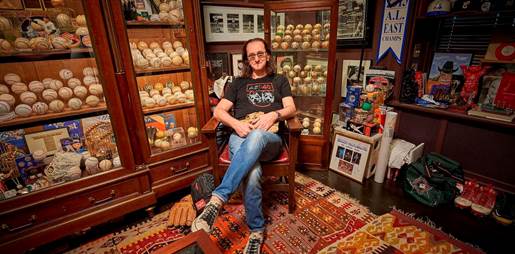
Lee is a lifelong baseball fan and for many years has been a Toronto Blue Jays season ticket holder. He’s also an avid fantasy baseball player and a student of the history of the game.
While on a Rush tour in 1990, Lee was staying at the Crown Center Hotel in Kansas City. He made a chance visit to one of the Crown Center shops, and it turned into his first big step in assembling one of the all-time private collections of baseball memorabilia. The shop…
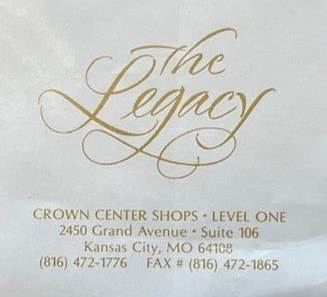
I have two sources regarding this Kansas City connection, (i) J.W. Jones, the owner of the shop (with an assist from Wayne Tenenbaum), and (ii) Geddy Lee, in an interview published in The Athletic just before the December auction.
Jones and Tenenbaum: I met Wayne Tenenbaum in law school, and we became lifelong friends. Wayne died in 2022, and my tribute to him included part of this Geddy Lee story.
While in law school, I also met Ken Hill, then operating a bar called Big Tom’s in Westport. We would later work together on many political campaigns. Ken and Wayne formed a property tax consulting business in 1980, and I became the attorney for the company. Below, Ken and Wayne at their office.
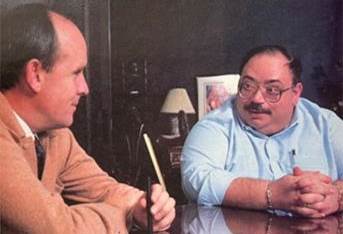
In the mid-1980s, Tenenbaum-Hill hired a new COO, J.W. Jones (below), who in addition to his duties at the company, became part of a fantasy baseball league with several of us in Wayne’s orbit.
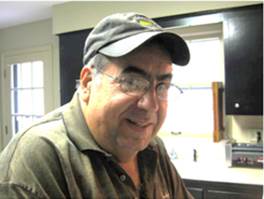
Wayne and J.W. were memorabilia aficionados. For Wayne, this included a huge (and valuable) baseball card collection. J.W. took it to the next level. He left Tenenbaum-Hill and opened The Legacy in Crown Center. The shop specialized in historic documents and celebrity autographs, many of which were beautifully framed.
Several years ago, I had a couple of lunches with Wayne and J.W. and got their story on Geddy Lee.
In 1990, Lee wandered into J.W.’s shop. He liked a couple of pieces and bought them. J.W. was not in at the time, so Lee asked the manager to have J.W. call him. They connected, and Lee asked for a meeting to discuss building a collection. J.W. recruited baseball savant Wayne Tenenbaum to help cement the deal. The three met at Bryant’s for lunch (Wayne, a food connoisseur, hosted many gatherings at Bryant’s).
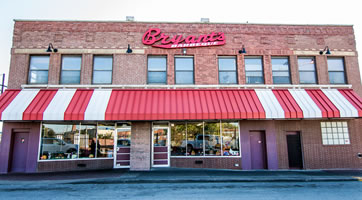
That day at Bryant’s started a 25-year relationship between advisor Jones and collector Lee. Wayne also stayed involved, hosting Lee for Royals baseball games and golf when tours brought Rush to Kansas City. Rush was a prolific touring band and stopped in KC many times, playing Kemper, Sandstone, Starlight and Sprint.
When Rush played in KC in 2007, J.W. and Wayne took Lee to the Negro Leagues Baseball Museum where he was given a tour by NLBM staffer Cathie Moss. Lee fell in love with the place. He later said the visit “left me with this incredible feeling of awe…and at the same time embarrassed that I didn’t know more about that whole portion of American history…it stuck with me.”
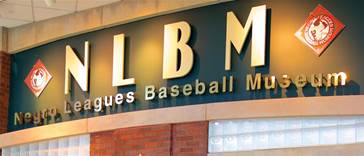
Soon after that visit, J.W. spotted an auction that included baseballs signed by Negro Leaguers. He suggested to Lee that he might want to buy some to donate to the museum. Lee agreed and successfully bid on one of the lots (200 balls). J.W. then worked with NLBM curator Ray Doswell to arrange delivery of the balls to the museum.
In June of 2008, Ray saw that Rush was scheduled to play Starlight. Ray suggested to J.W. that Lee attend a press event at the museum to announce the donation. Everyone agreed, and Bob Kendrick presided over the event. Bob was then the marketing director for the museum, and in 2011, he became president.
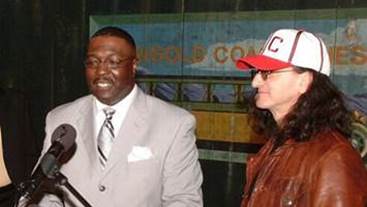
Lee was so pleased with his first purchase that he and J.W. checked with a bidder who had purchased a different lot of 200 balls. Lee offered to match the price and then donate that lot to the museum. The other bidder agreed, increasing Lee’s donation to 400 balls. The collection was then turned into one of the best-known exhibits at the museum.
When Rush returned to play Starlight in July of 2010, Lee came to see the exhibit. Ray Doswell arrived just after Lee entered the exhibit area, saying “He was just standing there staring at all of them, speechless. He was clearly moved by how it was put together…I think seeing them in that setting was very special.”
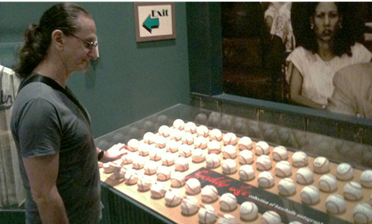
In one of the video chapters of his 2020 “Storied” series, Bob Kendrick in his delightful style tells the story of the donation (“I can’t say that I was a big Rush fan before…but I’m a Rush fan now!”). Video here (4 minutes).
Article in The Athletic: When the auction for Lee’s collection was announced, sportswriter Chad Jennings wrote an article in The Athletic. To my great appreciation, he covered the story of how Lee worked with J.W. Jones (identified as “shop owner” in the article, but there is no doubt that it is J.W.).
Lee said he was on tour in Kansas City when he “stumbled upon a memorabilia shop and purchased a photo of Satchel Paige and a signed photo of Bobby Thomson’s ‘shot heard round the world’.”
Lee did not want to stop there. “I got in my head – and I think this is how every collector starts – wouldn’t it be cool to have a baseball signed by Babe Ruth?”
Lee met with J.W. who would become Lee’s “dear friend and mentor” in building the collection. And yes, the auction included balls signed by Babe Ruth.
One of Lee’s prize acquisitions was a ball having the signatures of most of the members of the 3,000-hit club – Ty Cobb, Willie Mays, Hank Aaron, Stan Musial, George Brett, etc. Lee credits J.W. with encouraging him to keep adding signatures to the ball; to not just admire a piece of history but to maintain it and enhance it. Lee has added Ichiro Suzuki, Miguel Cabrera and Albert Pujols. Below, getting Pujols’ signature (video here).

Some reports mistakenly say the ball is signed by all members of the 3,000-hit club, but the auction catalog says it has 26 of the 33 members. Five of the seven missing players are deceased, but the buyer at the auction can add two if the players are willing (Alex Rodriguez and Adrian Beltre). There is not much room left on the ball – Pujols squeezed his name in at the top of the Hank Aaron/George Brett section. The ball sold for $37,800.
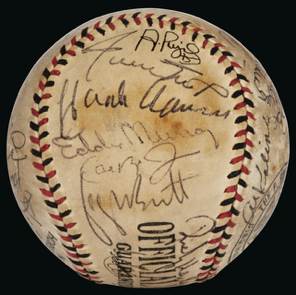
Geddy Lee and the Jones Family: J.W. Jones died in 2018. I checked in with his son Todd and found that the family stays in contact with Geddy Lee. Two weeks ago, Todd and his wife Andrea were in Denver to see Lee on a tour stop for Lee’s new book, My Effin’ Life. Below, Andrea and Todd with Lee.
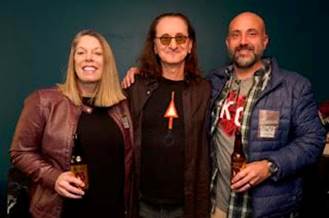
There was a big bonus in Denver. One of the questions from the audience was about the Geddy Lee exhibit at the Negro Leagues Baseball Museum. In addition to talking about the museum, Lee gave a wonderful shoutout to J.W. Jones. Video here (3 minutes).
Todd also sent me a photo that hangs on the wall at his home. Geddy Lee’s message, “To J.W., LOOK WHAT YOU HAVE DONE!!”.
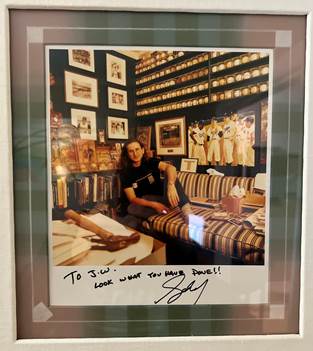
The Auction: The auction catalog is a thing of beauty and is full of baseball history. Click here to scroll through. The lots featuring a music note symbol are the pieces from Lee’s collection.
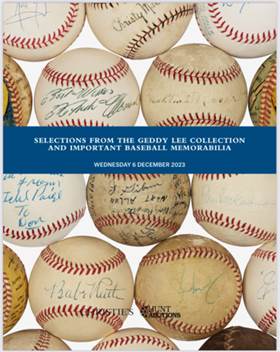
The results of the sales are at this link. Note the expected range shown for each ball and the final “realised” price (in auction talk, the “hammer price” plus a “buyer’s premium”). Let’s look at some of the sales.
Field of Legends at NLBM: Geddy Lee has walked on the Field of Legends at the Negro Leagues Baseball Museum where the players include pitcher Satchel Paige, catcher Josh Gibson and batter Martin Dihigo.
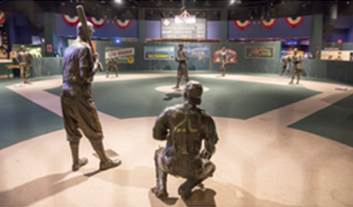
The auction included a ball signed by Josh Gibson, Satchel Paige and other Hall of Famers ($81,900) and a ball signed by Martin Dihigo ($32,760).
Jewish Connections: Geddy Lee is the son of Holocaust survivors from Poland. His parents met and fell in love as teenagers at Auschwitz, but then were sent to different concentration camps. When the war ended four years later, his father found his mother at a displaced persons camp at Bergen-Belsen. They married and emigrated to Canada. They named one of their sons Gary Lee Weinrib, but in his mother’s thick Polish accent, “Gary” sounded like “Geddy.” It became Lee’s nickname and later his legal name.
In an article by Jeff Morris in Sports Collectors Daily, Lee said, “I made sure to get a Sandy Koufax ball and then a Hank Greenberg ball. I also have a ball signed by Moe Berg, and I find him one of the most fascinating people in baseball history.”
Wayne Tenenbaum introduced me to Moe Berg decades ago by recommending that I read Berg’s famous biography, The Catcher Was a Spy. Berg, a Jewish journeyman catcher, was also a U.S. spy.
At the auction, a Hank Greenberg bat sold for $94,500. Moe Berg’s bat sold for $21,420, and notes related to his CIA work fetched $5,670.
Mickey Mantle was not Jewish, but a bidder paid $15,120 for this ball:
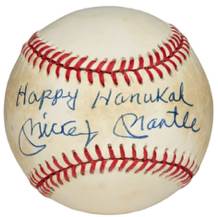
Presidential Baseballs: The auction included balls signed by 11 presidents. The surprise bid was on a ball signed by Herbert Hoover. It had a projected range of $25,000 to $50,000, but it sold for $214,200!
John F. Kennedy’s ceremonial first pitch in Washington on opening day in 1961 (also signed by Lyndon Johnson) went for $179,100.
In 1950, showing his ambidextrous ability, Harry Truman threw out two opening day first pitches, one from each side (newsreel here). One of those balls was caught by Washington’s Eddie Robinson and then signed by Truman (photo below). The provenance of the ball includes a letter from Robinson. It sold for $13,860.
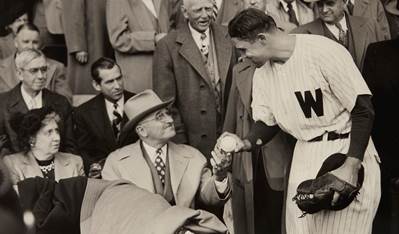
I’m guessing that most items in the auction were sold for more than Lee paid. But this Truman item is an example that the price can go down. As I went down the rabbit hole working on this post, I found that this Eddie Robinson ball had been sold at an auction in 2011 (probably to Lee) for $29,375 (click here). My take – The ball is worth more and was a bargain for the buyer.
[Truman Trivia: The Executive Director of the Truman Library Institute is Alex Burden. When he read my tribute to Wayne last year, he saw the reference to The Legacy. Alex contacted me to say he worked for J.W. at the shop from 1991 to 1993, a gap period between graduating from KU and returning to get his masters in medieval history. Alex is also a sports fan, and so his history and sports interests were a match for working at the shop. He gave back a good part of his salary buying items for his personal collection. The highlight is a ball signed by the full 1985 Royals World Series team, a piece J.W. found for Alex and bought for him at a trade show.]
Some Other Notable Items: There are far too many interesting items to list them all, even in this typical obscenely long Hot Stove. But below are a few. If you are looking for anything specific, the catalog and sales results are searchable.
A ball signed by all four Beatles at their concert at Shea Stadium in 1965 ($176,400).
Mind boggling pair of gems. The final out baseballs for Johnny Vander Meer’s consecutive no-hitters in 1938 ($50,400).
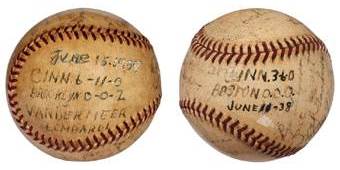
1917 Chicago White Sox, signed by seven of the “Eight Men Out” in the 1919 Black Sox scandal, including Shoeless Joe Jackson ($52,920).
1934 all-star tour of Japan, including Babe Ruth, Lou Gehrig, Jimmy Foxx and…Moe Berg ($22,680).
1955 World Champion Brooklyn Dodgers, the Boys of Summer. Robinson, Campy, Hodges, Koufax, Furillo, etc. ($32,760).
Babe Ruth ($50,400). Ruth and Lou Gehrig ($88,200). Roberto Clemente ($88,200). Grover Cleveland Alexander ($56,700). Rube Waddell ($88,200). Christy Mathewson ($43,200). Kid Nichols ($25,200),
Mickey Mantle bat ($94,500). And the Mickey Mantle laugher shown below ($32,040). The inscription was a light-hearted reference to a play at third base in which Mantle slid into Brooks Robinson and was called out.
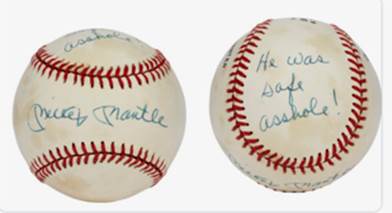
Lonnie’s Jukebox – Rush Edition: I’ll start with a confession. I’ve heard of Rush. Know they are in the Rock and Roll Hall of Fame. Sort of remember hearing about Paul Rudd being a fan of Rush in a movie. I have previously written about Geddy Lee giving the 400 baseballs to the NLBM. But I know almost nothing about their music.
When Rush was putting out hit albums in the ‘80s and ‘90s, I was in my 40s and 50s. They were on the “album rock” stations while I was still listening to Top-40 stations with hits from the singles charts. I missed the “progressive rock” era. So, I’ve had to cobble together an “Old Man’s Rush Playlist.” I hope Geddy Lee understands.
In the liner notes to their Signals album, the band used baseball positions to describe their roles. The other positions around the diamond were assigned to producers, stage managers and technicians.
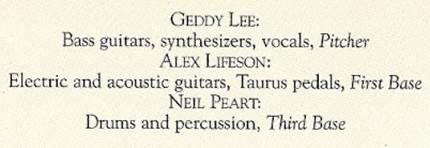
From left, Alex Lifeson, Neil Peart and Geddy Lee (1978). Lifeson and Lee are now 70. Peart, the primary lyricist for the band, died in 2020 at the age of 67.
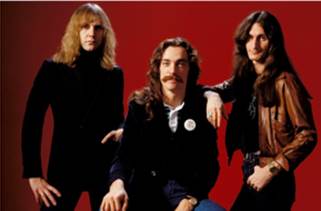
When I reviewed the Rush discography, I spotted two covers of records I have in my 45-rpm record collection.
“Not Fade Away” by Rush (1973). This was their debut single. The record in my collection is by Buddy Holly and the Crickets (1957; click here).
“Summertime Blues” by Rush (2004). Mine is by Eddie Cochran (1959; click here).
Three other songs have some familiarity…
“Limelight” by Rush (1981, but this link is to the concert scene in the 2009 movie I Love You, Man). Rush fanatics Paul Rudd and Jason Segel dance and air-guitar while ignoring Rudd’s fiancée (Rashida Jones). Rudd has been trying to get his fiancée to appreciate Rush (click here). The song is also played over the closing credits by a cover band led by Rudd and Segel, and Rudd is pleased that his new wife has become “Rushified” (click here and prepare for raunchy dialogue).
Rudd is also a fan of Rush in real life and was the interviewer on the inaugural stop of Lee’s current book tour. Below, at the Beacon Theater in New York.
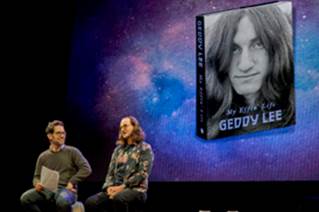
[Paul Rudd Trivia: Remember the Moe Berg artifacts discussed above? Paul Rudd played Moe Berg in the 2018 biopic The Catcher Was a Spy.]
“The Spirit of Radio” by Rush (1980). This is a Rush song that has appeared in a prior Lonnie’s Jukebox. Hot Stove #183 featured baseball on the radio, and the playlist included various songs about radio. Don’t miss the video in this song – it’s very interesting.
“Tom Sawyer” by Rush (1981). This is considered by many to be the signature song for Rush. In this clip from Family Guy, Peter is at a Rush concert and yells out a request for “Tom Sawyer.” Geddy Lee responds that it’s already been played, and then chides Peter for being the only fan not wearing black jeans. Geddy also throws in a reference to the “completely unoccupied ladies room” – Rush is known for having a male-dominated fan base.
Having exhausted my knowledge, I called my son Brian to close this out with a couple more songs. He was first exposed to Rush in 1977 when he was a sophomore in high school. That’s when he heard the 2112 album that was popular with the “long hairs” (like Brian at the time), and it was the kind of album you had to listen to from beginning to end (so way too long for the Jukebox). Brian’s first Rush concert was the Farewell to Kings tour at Municipal Auditorium in 1978. He added four more Rush concerts over the years. His picks…
“Working Man” by Rush (1974).
“The Trees” by Rush (1978).
I’ll close with a return to baseball…
“O Canada” by Geddy Lee at the 1993 MLB All-Star Game at Camden Yards.